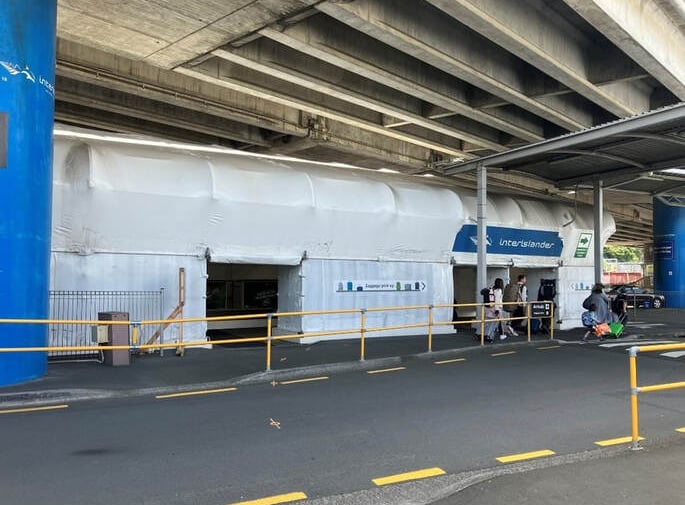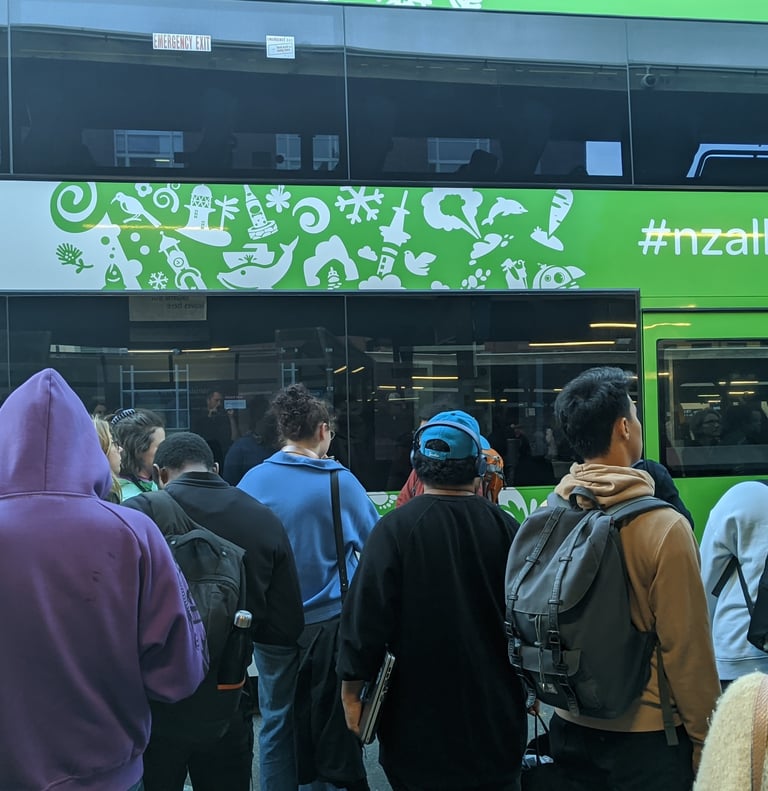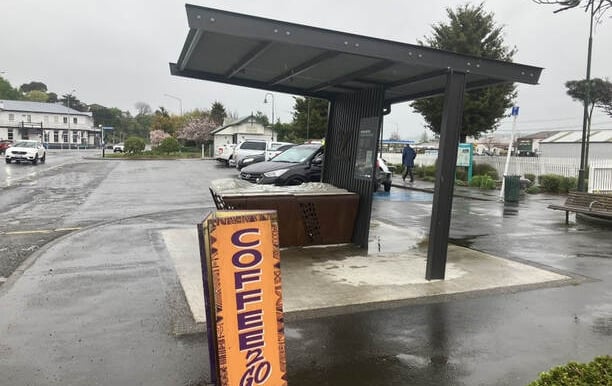Not flying or driving? Then you are a second class citizen
Critical public transport infrastructure is always shunted to the bottom of the list.
PUBLIC TRANSPORTINFRASTRUCTUREPLANNINGINVESTMENT
Paul Callister
12/16/20233 min read


If you are a foot passenger arriving at the Interislander ferry terminal in Wellington, expect to pick up your luggage in an unheated open sided tent. This is not a temporary tent, it has been used for many years.
Clearly this is not a Ferrari terminal. It is not even a Toyota Corolla version. As Michael van Drogenbroek notes “it’s a 1998 Toyota Corrolla model infused with rust, peeling paint, wind down windows that don’t work with the label on the bonnet falling off”.
If this substandard infrastructure was just a temporary fix before being replaced with a well-designed, welcoming building that locals and tourists could be proud of then perhaps this would be understandable. But the decision to scuttle the new ferry terminal means that the tent is here to stay in the immediate future.
Unfortunately, the ‘tent’ is not an isolated example of the infrastructure supporting travel by train and buses in New Zealand. Unlike airports, many train stations, bus depots and ferry terminals throughout Aotearoa New Zealand are of poor quality.
Take Wellington railway station as an example. There is no warm waiting room. Instead, passengers are forced to sit on metal benches outside the New World supermarket, sheltered from rain but open to the wind and the cold. On a mid-winters evening, this is an extremely cold area.
For passengers arriving after a long trip on an Intercity bus, including the overnight bus, or coming in from the Interislander terminal, there are no showers to freshen up in. There are no family friendly bathroom facilities. There are not even drinking fountains where one could top up water bottles.
The Strand, the difficult to reach rail terminal In Auckland for both Te Huia and the Northern Explorer, has been little more than a shipping container for many years.
But with only a couple of infrequent and expensive passenger trains operating in New Zealand, those who are not flying or driving have to use InterCity buses.
However, even more shocking is the InterCity depot in Auckland. This is the busiest long distance coach depot in New Zealand and the one overseas tourists travelling by bus are first likely to encounter on their journeys. Back in 2020, Heidi O’Callahan and I wrote about this terminal. At the time we noted:
“The waiting facilities at the central long-distance transport terminal are a barrier to using public transport as they are unpleasant and a public health concern. The design traps the diesel fumes, so the air is often polluted (and buses that spend the majority of their time on regional roads could be the last ones to be electrified). This affects passengers, people meeting them, staff and people walking past.
There are no parenting rooms, insufficient seats, and no drinking water provision. As most of the buses have no onboard toilets, bus interchanges need to have adequate bathrooms for all users. Yet these graffiti-covered toilets have no specific facilities for the disabled or for infants, are poorly maintained, feel dangerous and are often closed for maintenance (as the build-up of glue from “Out of Order” signs shows.)”
I visited the depot in early 2024. The only improvement was the latest set of graffiti had been cleared off the walls of the toilets.
Then there is the bus stop and important interchange in Taupo. The newly rebuilt stop at Taupo is also a disgrace. Passengers have to do a 400 metre walk to unheated toilets with no cover from the weather. Buses load and unload also with no cover. There once was a central city bus depot but the council sold it. In contrast, Taupo now has a new airport terminal funded by both ratepayers and taxpayers.
There are many more examples of poor bus infrastructure throughout New Zealand. With Bay Express no longer operating, those catching the bus at Waipukurau can try and find a dry spot to stand in this bus shelter.
But there are a few good examples as well. The Manukau bus interchange is a vast improvement from the open air bus shelter it replaced. The Hamilton bus interchange works well – and will be even better when the underground station is reopened. And New Plymouth has a small but very practical bus depot.
And there are some lovely railway stations. For example, the recently restored Dunedin station awaits the return of the Southerner and local trains.
With a few exceptions, when compared with airports, the facilities supporting bus, train and ferry travel in New Zealand are of poor quality. Those using these services, whether they be visiting international tourists or local holiday makers choosing to use local low emission forms of travel, or simply those who are travel disadvantaged and have no other options, deserve better. The decision to scuttle the Interislander ferry terminal upgrade continues the trend to treat these travellers as second-class citizens.






